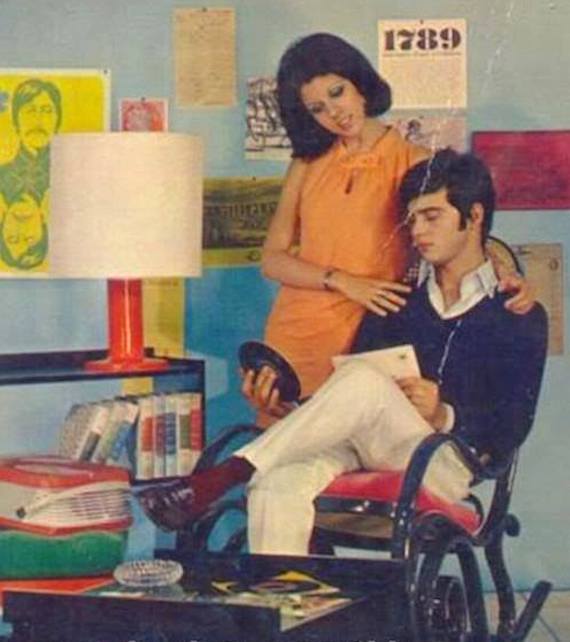Few musicians in jazz history have proven more vigorously productive and resourceful than David Murray. During the past 35 years, from the moment he first visited New York as a 20-year-old student, playing in a walkup loft, in 1975, David has careened forward in a cool, collected, rocket-fueled streak. He has released over 150 albums under his own name. Yet more impressive than the numbers is the constancy of two abiding achievements: as a tenor saxophonist, he has perfected an instantly recognizable approach to improvisation that even in its freest flights acknowledges the gravity of a tradition he honors more than most; and he has altered the context for his improvisations as an infinite mosaic of musical challenges and explorations.
With this new album, we hear the fruit of one of David Murray’s most improbable and effective projects: an interpretation of two albums that Nat King Cole recorded in Spanish and Portuguese in 1958 and 1962, performing melodies from Cuba, Mexico, Puerto Rico, Rio de Janeiro, and Buenos Aires.
The result is one of Murray’s most purely pleasurable albums. It demonstrates a tremendous leap in his approach to a world of music that has long fascinated him. The arrangements are imaginative, compelling, and wily, especially in the integration between winds and stings. The band is as tight as a fist. And there is a stunning feature for David Murray the improviser, a sensational tour de force and high spot in his massive discography.
The Cuban songwriter and flutist (known as “la flauta magica”) Richard Egues wrote the enduring “El Bodeguero” (the Grocer’s Cha Cha), which inspired Murray to take a more Ellingtonian approach, using an expansive swing rhythm that underplays the cha-cha-cha beat emphasized by Cole. It concludes with his own signature approach to counterpoint, a frequent joy throughout the album. David’s solo is exceptional, at times echoing the mellow strength of Ben Webster, especially in the middle section. There are also telling solos by trombonist Denis Cuni Rodriguez, a graduate of the National School of Music in Havana and an educator in his own right, and pianist Jose “Pepe” Rivero, a composer with an accomplished classical piano technique.
Quizas, Quizas, Quizas, one of two selections by Cuban songwriter Osvaldo Farrés, is perhaps the best remembered of Cole’s interpretations, complete with Romeu’s lovely strings. Composed in the 1940s, it was much covered and memorably revived in Wong Kar-Wai’s film In the Mood for Love. After the tenor and trumpet split the theme chorus, shadowed by the ensemble, we hear the insinuating, whisky-stained, darker than pitch voice (Tom Waits squared) of Daniel Melingo, a veteran of Buenos Aires rock who went to Spain to score films for Pedro Almodovar, and, in the late 1990s, returned to Argentina to spearhead a tango revival. For most Americans, this will be the first encounter with an artist who has garnered much attention throughout Latin America.
From the 1962 album, More Cole Español, the second Osvaldo Farrés classic, “Tres Palabras,” here given a deeper emotional cast than Cole’s version by the trumpet playing of Mario Felix Hernandez Morejon, who is at home with Mozart as well as jazz. This selection features one of Murray’s most lyrical arrangements, in the way he frames the solos; it finishes with a climax that entwines Murray, Filiu, and Ruiz in an episode that might be called Tres Saxofonistas.
“Piel Canela” is the best known song by Bobby Capó, the Puerto Rican entertainer and songwriter who came to New York to work with Xavier Cugat, and soon became a Latin American celebrity in his own right. Murray replaces Ralph Carmichael’s vamp with a contrapuntal intro to a performance that includes another inspired alto solo and a fierce Murray wrap-up solo.
Yet Murray’s solo triumph on this session is, as noted, the remarkable “No me platiques,” a serenade by the Mexican composer Vicente Garrido, known as The Master. This is all Murray and strings—an eight-minute, superbly paced cri de coeur, combining romance and drollery before attaining a deep, persuasive resolution. Murray original, “Black Nat,” uses riffs to build an intricate ensemble backing for the soloists, including tenor saxophonist Ariel Bringuez Ruiz, though it is Murray who unmistakably claims the climax.
From the 1958 Cole Espanol. “Cachito,” Cole’s first venture in Spanish was recorded entirely in Hollywood, with a Dave Cavanaugh arrangement and an orchestra made up of Latino musicians in Los Angeles. The song, written by Mexican pianist and composer Consuelo Velázquez, best known for her imperishable standard “Besame Mucho,” has three eight-bar melodies. Murray’s written obbligato for winds and the strings gives the illusion of spontaneous invention, especially during the C section—whirling in double-time responses to the melody statement by tenor saxophone. We are also introduced to the bebop radiance of the alto saxophonist. Roman Filiu, who worked with Irakere and recorded with David on his excellent rhythm-and-strings album Waltz Again.
Edgardo Donato’s legendary 1920s tango, “A media luz,” generated a delightful Cole performance, smooth and sure, but in this version, it reclaims its tango roots in a performance featuring Daniel Melingo, himself a musical descendant of Carlos Gardel, who helped make it a standard. Murray turns to the bass clarinet, choosing his notes with care and sustaining the rare sense of accomplishment when two musical worlds discover they have more in common than is generally acknowledges or celebrated. Murray Plays Cole in Español is all celebration.
“Aqui se habla en amor” was the ringer in the Cole repertory, as it was composed by Jack Keller, a prolific writer of mostly forgotten Top-40 tunes (his clients ran the gamut from Perry Como to Frankie Avalon), and his mentor Noel Sherman, who had written the Cole hit, “To the Ends of the Earth.” Murray takes the tempo up and employs divergent melodies to recreate the piece as a cool, modern jazz theme—the layered themes indicating an Eastern quality as well.
by Gary Giddins
No me platiques by David Murray












No comments:
Post a Comment